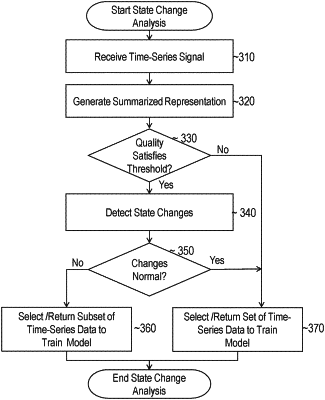| CPC G06T 11/206 (2013.01) [G06F 11/3452 (2013.01); G06F 17/18 (2013.01); G06F 18/2431 (2023.01); G06F 21/55 (2013.01); G06N 20/00 (2019.01); G06Q 10/04 (2013.01); G06Q 10/06 (2013.01); G06Q 10/0631 (2013.01); G06Q 10/1093 (2013.01); G06Q 30/0202 (2013.01); G06T 11/001 (2013.01); G06F 9/505 (2013.01); G06F 2218/12 (2023.01); G06Q 10/06315 (2013.01); H04L 41/0896 (2013.01)] | 20 Claims |

|
1. A method comprising:
compressing a time-series signal within storage on at least one computing device to create a training dataset for a forecasting model by iteratively dividing a segment in the time-series signal into sub-segments until linear approximations of the sub-segments satisfy a threshold quality of approximation while maximizing a compression level, wherein compressing the time-series signal reduces data access times to train the forecasting model while satisfying the threshold quality compared to training the forecasting model using raw data from the time-series signal;
determining, by a training process, which sub-segments from the compressed time-series signal to select to train a forecasting model based at least in part on the quality of the approximation of the time-series signal;
accessing, by the training process from storage on the at least one computing device based at least in part on said determining, a first set of one or more sub-segments from the compressed time-series signal as the training dataset for the forecasting model, wherein a second set of one or more sub-segments from the compressed time-series signal is excluded from the training dataset;
training, by the training process, the forecasting model using the first set of one or more sub-segments from the compressed time-series signal included in the training dataset that excludes the second set of one or more sub-segments from the compressed time-series signal; and
allocating one or more computing resources using the trained forecasting model, wherein the one or more computing resources are allocated based at least in part on resource utilization projected by the trained forecasting model.
|